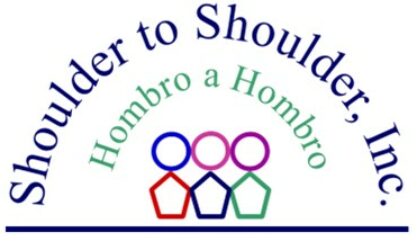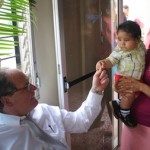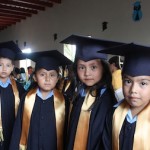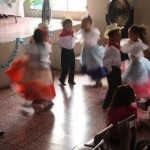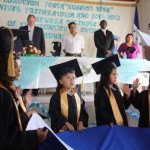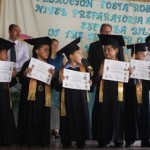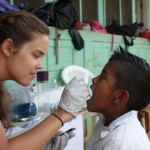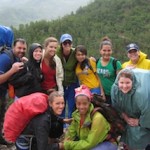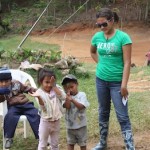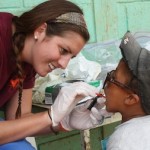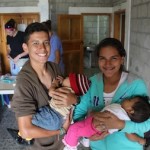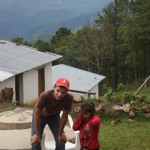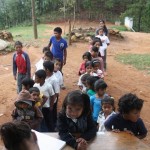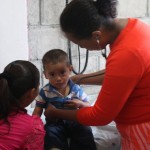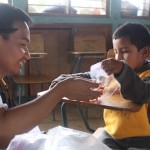March 22, 2014
In 2012, Shoulder to Shoulder was selected by the Ministry of Health has a representative for the Mesoamérica Health Initiative. Mesoamérica Health 2015 is a 5-year, public-private partnership initiative to reduce health equity gaps in Mesoamérica faced by those living in extreme poverty. The initiative (SM2015) is funded by the Carlos Slim Foundation, the Bill and Melinda Gates Foundation, the government of Spain, and the World Development Bank.
The initiative’s goal is to support regional governments’ efforts in achieving the Millennium Development Goals in health, through investments in proven interventions for the poorest 20% of the population, mainly women and children under five. SM2015 supports meeting these goals through extending coverage, quality and use of basis reproductive health services; improving maternal, neonatal and infant health care services; improving child nutrition and increasing immunization coverage.
At the regional level, specific targets include:
• Reducing infant mortality by an average of 15% in the poorest countries of the region in the 20% poorest.
• Attend 260,000 poor children with health interventions to reduce chronic malnutrition.
• Ensure that 90% of children under two years of age of the poorest quintile have all vaccinations.
• Increase the number of births attended by skilled personnel by 50% to reduce maternal and neonatal mortality
The initiative’s guiding principles include:
1. Equity and targeting the extremely poor.
2. Country ownership and alignment with national and regional policies.
3. Impact and results-based approach.
4. Measurement and evaluation of performance.
5. Transparency and accountability.
6. Additionality (Funding granted may not replace national funding to ensure the sustainability of investments)
7. Coordination with regional bodies.
As a result of Mesoamérica, Shoulder to Shoulder has received supplies and equipment, trainings, implemented new processes to maximize the efficient use of resources, and augmented existing government programs targeted at children under 5. Shoulder to Shoulder will soon be undergoing an evaluation and if the organization, as well as the other 5 participating decentralized models achieve 80%, will proceed to the next round of funding and associated targets. Shoulder to Shoulder was chosen not only for the challenges of providing care for the population it serves but also for the competency of its staff. Stay tuned to hear how we performed for our first evaluation. For more information about the project’s work throughout Mesoamérica, please visit: www.sm2015.org.
Bilingual School Graduation
In this part of Honduras, every accomplishment is worthy of celebration. On May 18, fourteen kindergarten students received their diplomas in the first graduation ceremony for the Frontier Bilingual School of Intibucá in Camasca, Honduras. In just its first year, the bilingual school has received accolades from the local community and from national educators.
The bilingual school is the first of its kind in the rural Honduras frontier. It provides the indigenous population, many of whose families live on less than two dollars a day, with a high-quality bilingual education. The school plans to add a grade each year as the students advance.
The 100 person-strong crowd and the leaders in attendance demonstrated the significance of this initiative in the Honduras frontier region. Shoulder to Shoulder President Wayne Waite, representatives from the Honduran Ministry of Education, and the mayor of Camasca attended and spoke during the celebration. The ceremony was played on national television in the days following graduation, further emphasizing the significance of this seemingly small accomplishment.
At the ceremony, the students, faculty, and community of Camasca expressed their gratitude to Shoulder to Shoulder and the Good Shepherd Community of Cincinnati for believing in the school and for helping make their dreams a reality. Shoulder to Shoulder director of Education Profesora Iris Villanueva told the crowd: “With this initiative, we have provided a beacon of hope for children in this region and set a precedent for others to follow elsewhere in the country.”
Click the links to learn more about the bilingual school, our scholarship programs, and how you can help.
Brigade Update: VCU
Between June 11 and 22, a medical brigade from Virginia Commonwealth University joined Shoulder to Shoulder in the Pinares area of San Marcos de la Sierra. Since 2006, VCU has regularly visited this area. They visit three times annually, and generally include medical students, family medicine residents, and family medicine faculty. Over the years, they have brought dentists, sociologists, pharmacists, nurses, public health workers, and interpreters with them.
For two weeks, this group of physicians, medical students, pharmacists and PharmD candidates, MPH candidates, nurses, a paramedic, and student-translators from the bilingual school in La Ceiba engaged the community in the established Children’s Health Initiative (CHI) at local schools and treated patients at the Pinares clinic. The brigade also took in the U.S.A.-Honduras World Cup qualifer event, crowding into a small pulperia with most of the local community to watch the game. Aside from a few bruised egos, the American win did not cause any international incidents.
Every day, the brigade split into two teams. One group treated patients at the Pinares clinic, treating farming injuries, providing prenatal check-ups, pregnancy exams, and more. The CHI group hiked to a different school each day and set up health stations to address all areas of the children’s health. These included measuring height and weight, taking their hemoglobin, eye exams, fluoride rinses, and visits with physicians.
During one home visit, the brigade examined a 31-year-old patient who had been experiencing abdominal pain. The man had not eaten or drank anything for over a day, and hadn’t moved in two days. Entering the darkened home, the brigade was greeted by a prayer group who had been standing vigil over the sick man all day. The brigade members evaluated the man and determined he needed hospital treatment. As a team, the brigade carried the patient up the steep slopes to the road and drove him to the hospital.
The Pinares and outer communities in San Marcos de la Sierra are very remote and mountainous. Away from the main road to La Esperanza, many locals must walk for hours to receive medical attention. VCU’s CHI group enabled them to evaluate and treat a large volume of geographically diverse group of needy children in the schools. Throughout the year, Shoulder to Shoulder’s health promoters and home health medical teams visit these remote communities and homes to ensure that children, elderly, pregnant, and high-risk patients are receiving the attention they deserve.
Thank you to VCU for your tremendous team effort and support of the Pinares and San Marcos de la Sierra communities!

